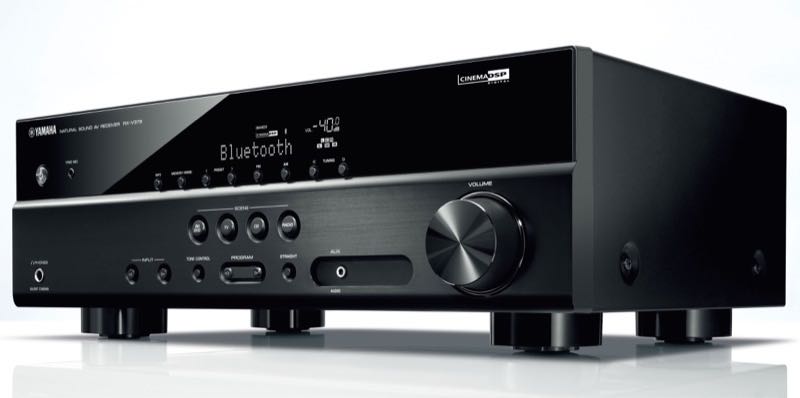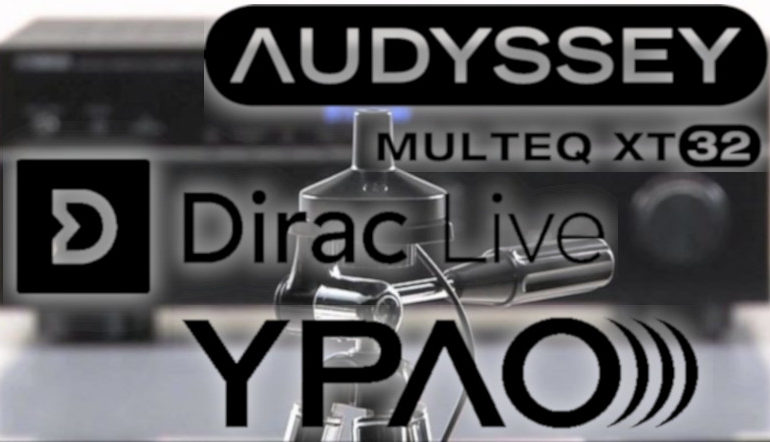Which Room Correction Program is the Best – Audyssey, YPAO, or Dirac?
Home theater receivers are constantly vying for your attention. A few watts here or there doesn’t sway as many buyers as it used to. Instead, there is a features race. Who has HDMI 2.1 and can do it right (answer…not many)? How many speakers can they power, what wireless solutions are supported, and what apps are built-in? They use all these to try and convince you to buy their product. One of the more recent features is room correction. There are lots of room correction programs out there, but which is the best? Let’s take a closer look!
The Most Common Room Correction Programs
Most people buy an off-the-shelf AV receiver. Lower-end models might have some proprietary room correction (or just setup) program. Those are mostly good for setting up your speaker levels and delays. But the name-brand programs are strikingly few. Yamaha has YPAO, Denon and Marantz have Audyssey, and Onkyo and Pioneer have Dirac. There are others out there, but they are either not worth mentioning because they don’t do much, or they only come connected to very expensive products (looking at you Trinnov).
Nearly all of these room correction programs have different “levels” or versions that offer more features. When we compare them, we are going to be comparing the top tier of their offerings. What does this mean for owners of lower levels? Well…
YPAO R.S.C. vs YPAO “Basic”
YPAO R.S.C. is the highest level of Yamaha’s proprietary room correction program. R.S.C. stands for Reflected Sound Control. The basic version only applies a parametric EQ. The R.S.C. version also applies FIR filters.
Audyssey MultEQ XT32 vs Other Versions
Audyssey has had a lot of versions of their room correction program. Generally, these days you’ll find MultEQ, MultEQ XT, and MultEQ XT32. The main difference between the versions is simply the number of filters. This means that the higher versions can make more corrections with greater precision. Some of the early versions couldn’t EQ the subwoofers at all so you’d want to stay away from those.
Dirac Live
Dirac Live is the newest kid on the block and doesn’t really have different names for their different versions. What we have seen is that newer versions of Dirac have more features implemented than older versions. That said, nearly all AV receivers sporting Dirac Live have the newest version of the room correction program.

Which is the Best?
The dirty little secret of these room correction programs is that they all do the same thing in almost the exact same way. All of them use FIR filters to dial in the response of your speakers. If you think that using the same tools should give you the same result, you’d be mostly right.
If you are one of the few people that have ever had the opportunity to compare these programs side-by-side, you may be shaking your head. In your experience, they don’t sound the same! You probably prefer one over the other. How can that be?
Target curves are the answer. Each of these room correction programs employs its own target curve. That target curve assumes certain things about what sounds best and tries to modify the overall sound of your system to match. But, if you were to change that target curve (and in these programs you can) so that the targets were all the same, they sound more similar than dissimilar.
Other Considerations
If you are thinking that I’m not being very helpful, I agree. This is the equivalent of saying, “Six of one, half dozen of the other.” There are differences, though. YPAO is probably the easiest to run and set up and has the best out-of-the-box curves but does the worst calibrating your subwoofers. Dirac is the newest and is the only one that will let you use your own microphone, but lacks the curves of equal loudness compensation programs included with the others. Audyssey has been around the longest and has many ways to customize it. But it is the most finicky about microphone position and the hardest to “do right.” Fortunately, we have a microphone guide to help you.

Most importantly, room correction isn’t a panacea. Too often we see people buying a receiver because of its room correction and then complaining that it isn’t doing anything. Why? Well, their room is an acoustical nightmare. The room correction program isn’t going to fix your bad room (the name is a bit misleading, we know). It will do what it can but it can’t stop your room from distorting what you hear. The first step is to treat your room with absorption and room treatments. Once you’ve done that, your room correction can dial in your sound. If you are in a highly reflective room, none of these room correction programs are going to be able to ‘fix” it.
How the room correction program works isn’t your only consideration, however. Each receiver offering at your price point has dozens of features that should help you decide which is best. If room correction is important to you, just make sure you are getting one of the top-tier versions. If you are doing that, you should end up with something that can do what you need to make your system sound as good as possible.



I would prefer room correction to be left out stick to reproduction sound as faithful to to source not alter the sound to sound like something else
Now I would like a true sub calibration only
With over 20 years home theater enthusiasts I’ve had many systems through the years my old denon 3803 still sounds the best no audessy awesome ,now I currently using a denon 3808 this old avr is still superior in sound quality to denons current lineup which is all about features not sound quality don’t need atmos my 7.1 setup with dual sides and rears something this avr does that new ones don’t is breathtaking
Don’t use audessy at all
Many subs these days come with manual EQ options. If you love your current Denon, getting a newer subwoofer with manual adjustments might be just the thing. Pair it with a mic and some REW measurements to really dial it in.
And how exactly do you accomplish that without a perfect room with treatments etc? Come on now…